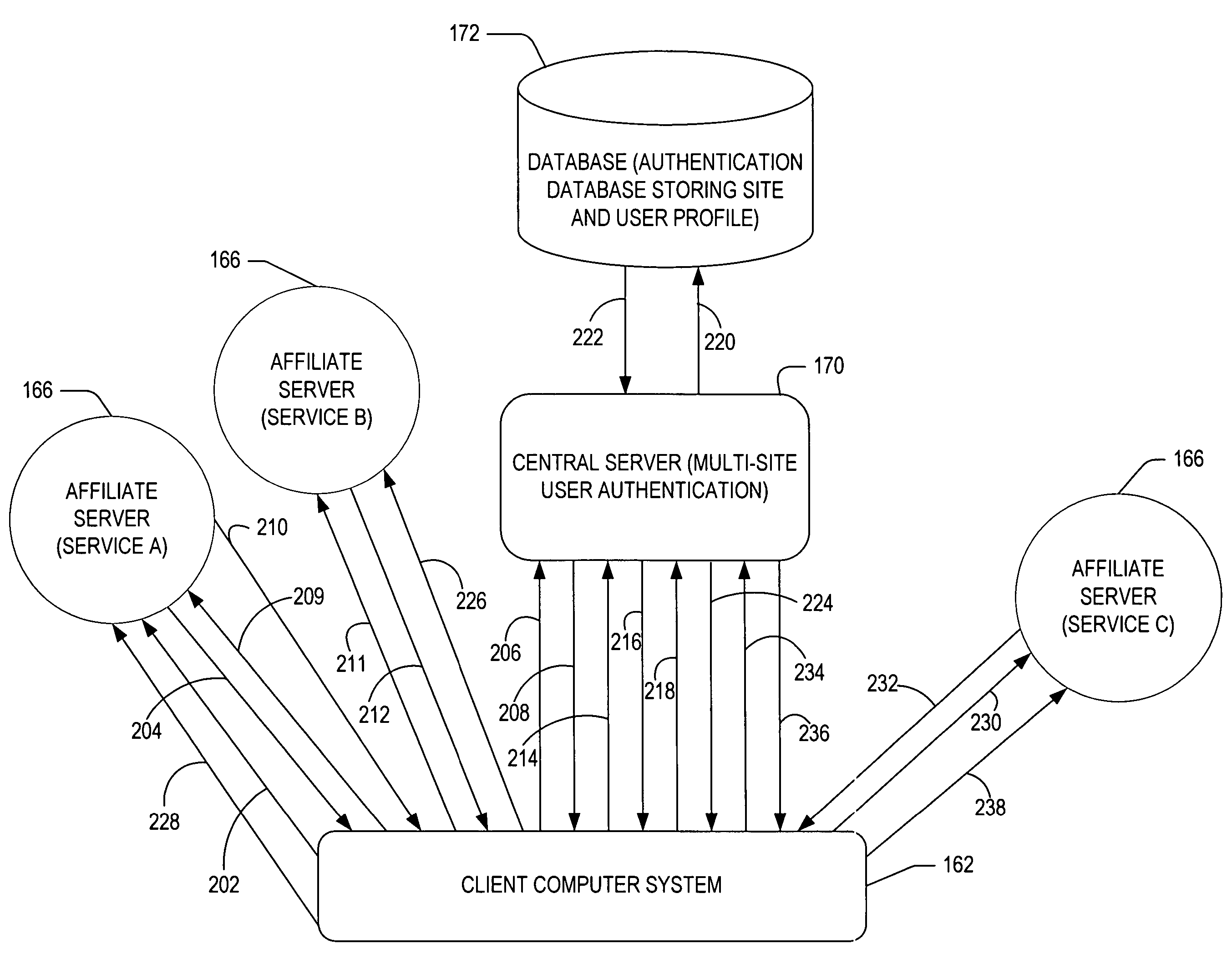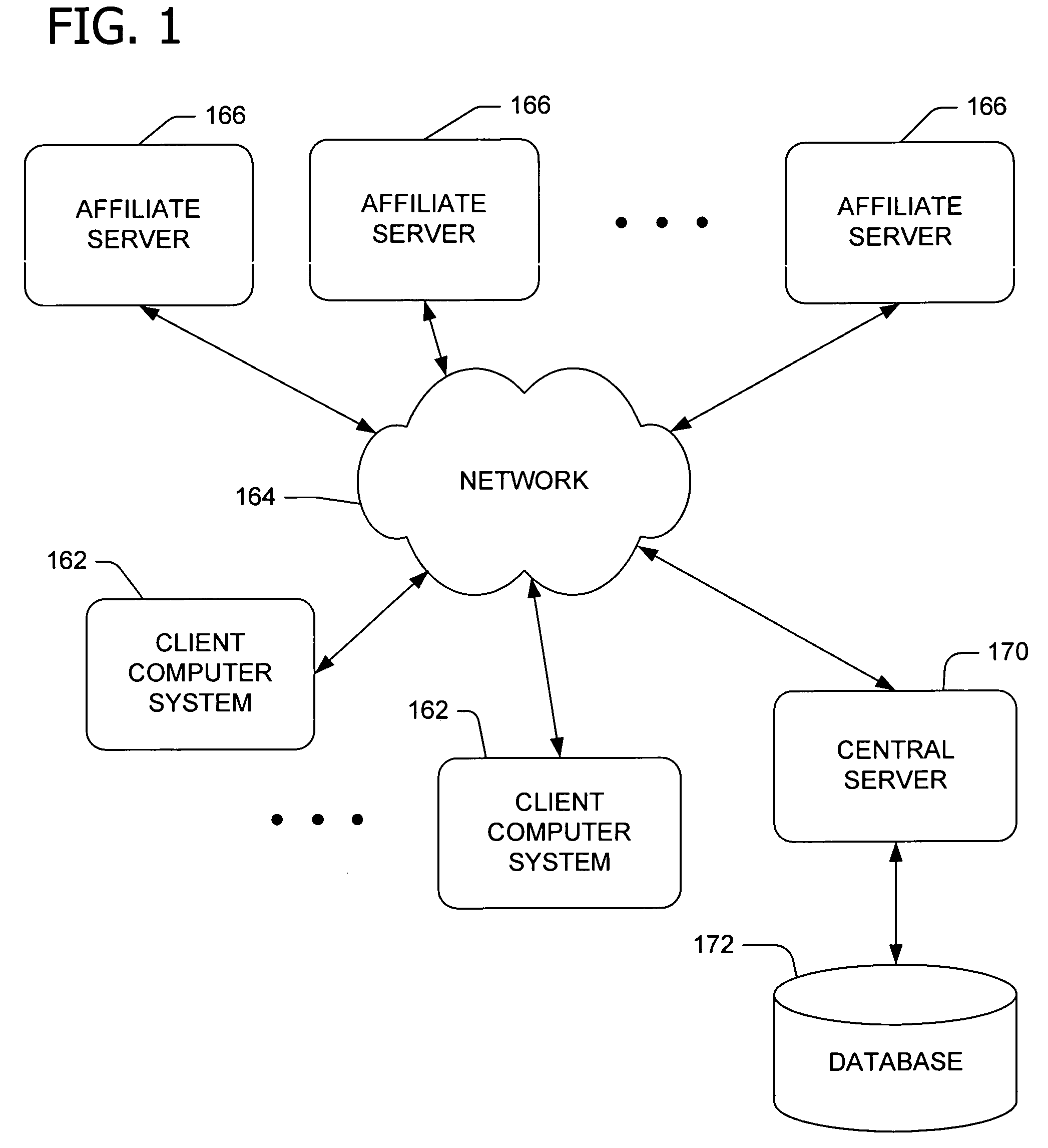Cross-domain authentication
a cross-domain authentication and authentication technology, applied in the field of computer network environments, can solve problems such as inability to address cases, lack of a consistent technique for determining whether a particular site is legitimate, and inability to be an acceptable user experien
- Summary
- Abstract
- Description
- Claims
- Application Information
AI Technical Summary
Benefits of technology
Problems solved by technology
Method used
Image
Examples
Embodiment Construction
[0033]Referring now to the drawings, FIG. 1 illustrates an exemplary network environment in which embodiments of the present invention may be utilized for authenticating a user across different domains. Embodiments of the invention relate to cross-internet collaboration between web sites as part of, for example, a distributed, multi-site user authentication system. Such services provide a user with the ability to access one or more participating web sites or resources with a single sign-in. Although the participating sites (referred to herein as “affiliates” or “affiliate sites”) maintain control over permissions, they use the authentication service rather than hosting and maintaining their own proprietary authentication systems. According to one embodiment of the invention, the affiliate sites are members of a “service group” or “shared services group” because they represent a group of independent site IDs that together provide a user with a set of services. Shared services groups,...
PUM
 Login to View More
Login to View More Abstract
Description
Claims
Application Information
 Login to View More
Login to View More - R&D
- Intellectual Property
- Life Sciences
- Materials
- Tech Scout
- Unparalleled Data Quality
- Higher Quality Content
- 60% Fewer Hallucinations
Browse by: Latest US Patents, China's latest patents, Technical Efficacy Thesaurus, Application Domain, Technology Topic, Popular Technical Reports.
© 2025 PatSnap. All rights reserved.Legal|Privacy policy|Modern Slavery Act Transparency Statement|Sitemap|About US| Contact US: help@patsnap.com



